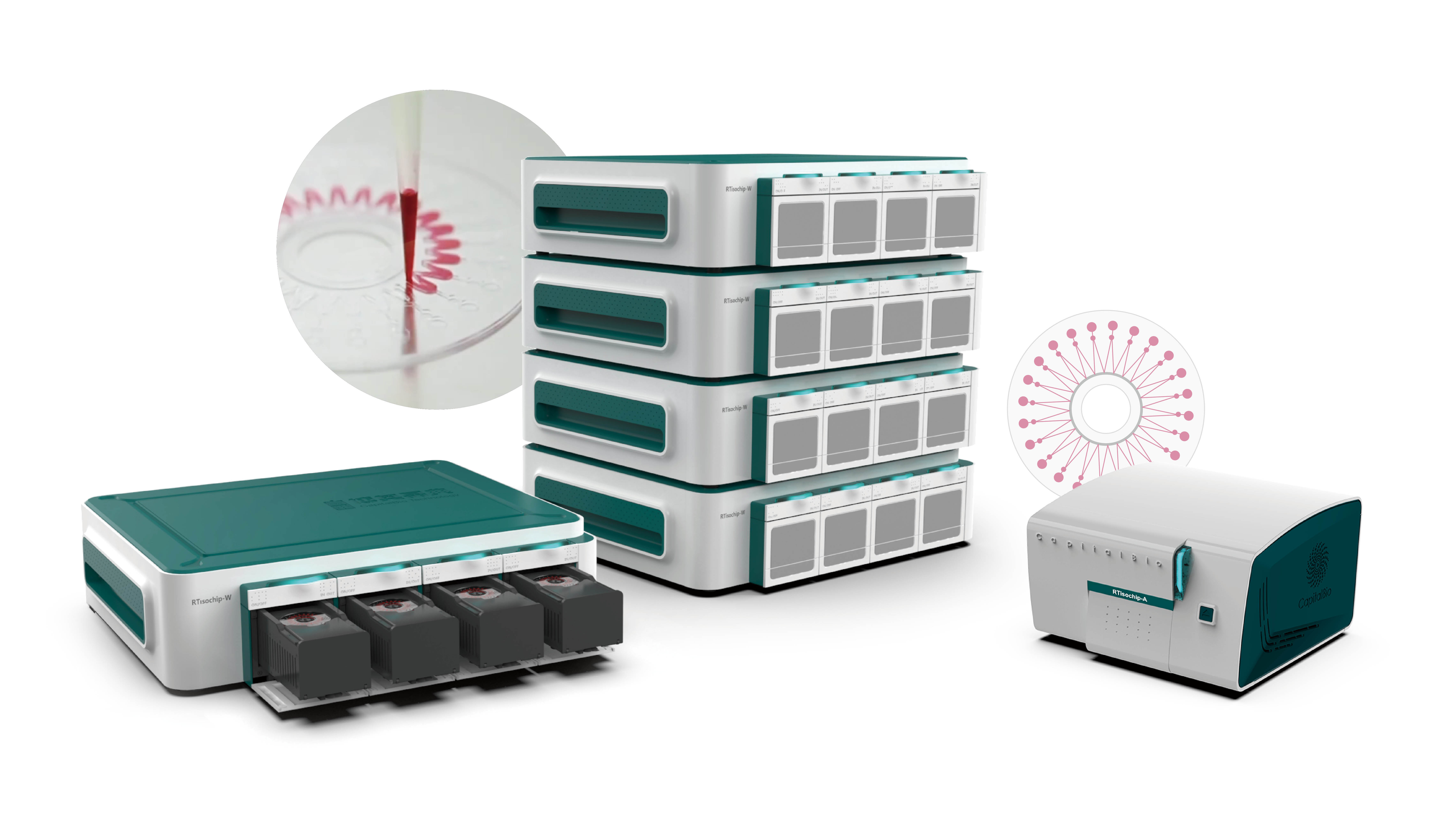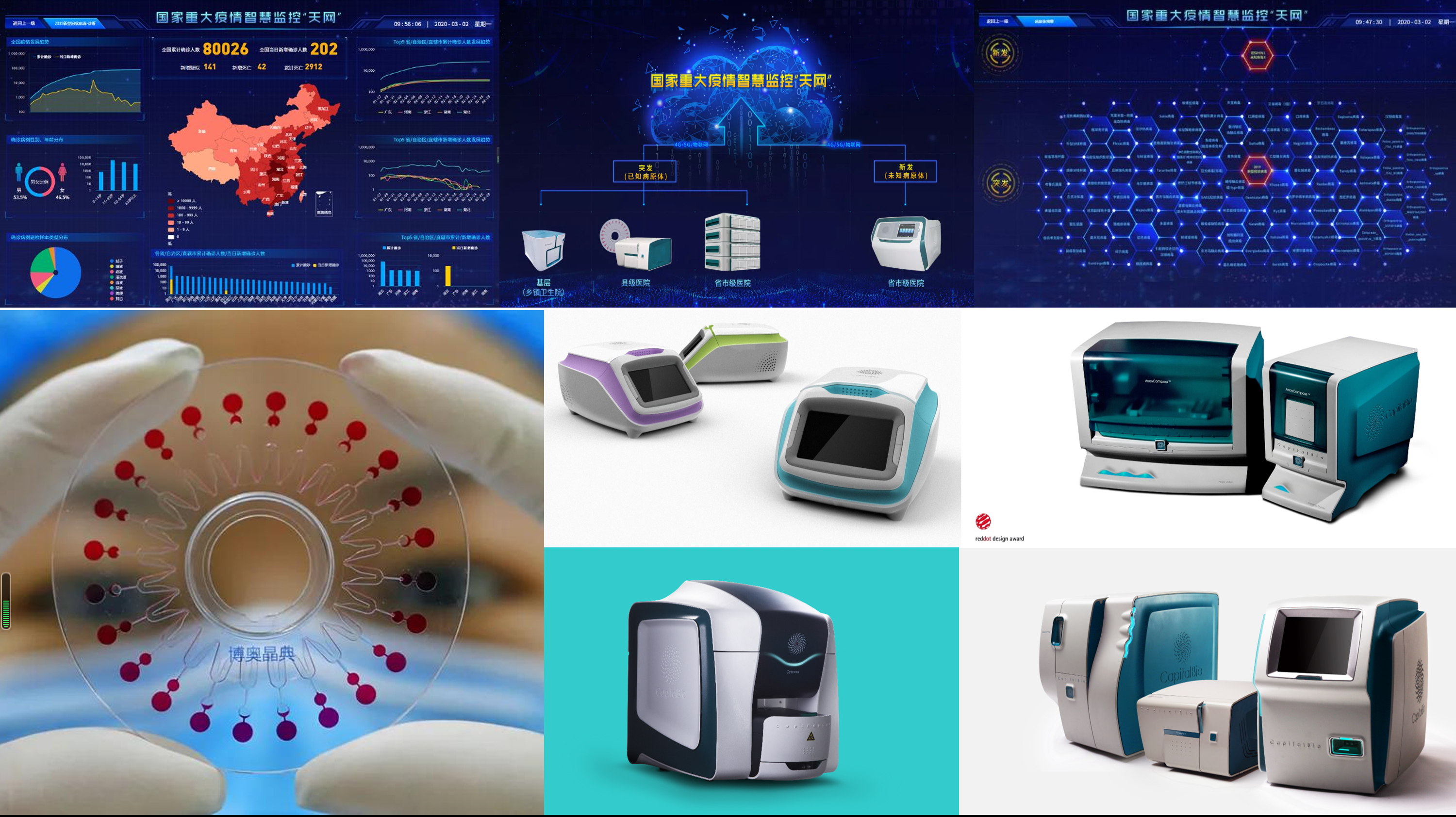enad.tsinghua.edu.cn , February 7, 2021
In the evaluation of various design awards held at the end of 2020, the industrial design results designed and developed by the Institute of Innovative Design for the Health and Medical Industry under the leadership of Professor Zhao Chao of the Tsinghua University Academy of Arts & Design (AADTHU), namely, "Pandemic Prevention and Control" series products, won five important design awards.
Among them, "Industrial Design Achievements of NAT Products for COVID-19 and Six RSVs" designed by Zhao Chao won the "Good Design Gold Award," the highest award in the field of innovative design in China jointly conferred by the Chinese Academy of Engineering, the China Strategic Alliance of Innovative Design Industry, and the China Mechanical Engineering Society. At the award ceremony, Academician Pan Yunhe, former Vice President of the Chinese Academy of Engineering, presented the award certificate to Zhao Chao's team, in the presence of more than ten academicians. As a very important award in the field of Chinese design, the "Good Design" Award, in recognition of the comprehensive development and model application of innovative design to the society and the industry, was established with a committee of nearly 20 academicians and more than 100 experts headed by Lu Yongxiang, former Vice Chairman of the Standing Committee of the National People's Congress and Academician of the Chinese Academy of Sciences and Chinese Academy of Engineering as Director, and Pan Yunhe, Academician of the Chinese Academy of Engineering, as Deputy Director. Addressing multiple fields such as industrial design, product design and service format innovation, the "Good Design" Award is expected to help promote good designs, enterprises and brands in China on the world stage and at the meantime boost "Three Transformations". "Industrial Design Achievements of NAT Products for COVID-19 and Six RSVs" also won the "Gold Award for Innovative Design of Emergency Rescue in China" jointly issued by the China Knowledge Center for Engineering Science and Technology and the Industrial Design Branch of the China Mechanical Engineering Society.
In 2020, under the leadership of Zhao Chao, the Institute of Innovative Design for the Health and Medical Industry, by fully leveraging the advantage of design science and in cooperation with experts from the School of Medicine, the School of Pharmaceutical Sciences and the National Engineering Center of Biochip of Tsinghua University, carried out multidisciplinary collaborative research, designed a series of pandemic prevention and control diagnostic products and services covering pandemic outbreak center to communities, hospitals and families, as part of their efforts to respond to the national call of pandemic prevention and control. In addition, the series of industrial design achievements related to pandemic prevention and control also won the "Special Award of 2020 Global Design Award: Global Anti-Coronavirus Product Design Award," an important international competition and award jointly launched and supported by UNESCO Global Creative City Network, International Design Federation, World Design Organization, Shenzhen Design Week Organizing Committee and other important design organizations at home and abroad, aiming to invite design institutions and designers at home and abroad to participate, find solutions for the global "Anti-Coronavirus" cause, and help mankind defeat novel coronavirus as soon as possible.
In addition, the industrial design achievement of Zhao Chao's team, "Industrial Design of COVID-19 Nucleic Acid Testing (NAT) Products" won a silver medal of the "China Red Star Design Award"; "Industrial Design of Household COVID-19 Fast NAT Box" the recognition of the "China Red Star Design Award". As one of the most influential industrial design awards in China, the 2020 China Red Star Design Award saw the participation of more than 7,000 products from more than 5,000 companies around the world competing for the awards. After several rounds of evaluation by more than 40 well-known experts and judges at home and abroad, the "application scenarios" for COVID-19 pandemic prevention and control and poverty alleviation were selected where cutting-edge, eco-friendly industrial design works with humanistic care were displayed. The award-winning works are prominently characterized by being "new", "advanced," "beautiful" and "high-quality," highlighting the deep integration of industrial design and applied technologies.
At the commendation meeting held in 2020, titled "Making Concerted Efforts to Take the Right Path, Seeking Goodness, Innovation, Courage and Commitment: Celebrating the 70th Anniversary of Beijing Democratic Progressive Organization," Zhao Chao was named as "Advanced Figure in the Anti-Coronavirus Campaign", in recognition of his series of design innovations in pandemic prevention and control. At this meeting, Wu Zunyou and other renowned experts in the front line of the "Anti-Coronavirus" Campaign were also commended.
Introduction to the award-winning achievements of Zhao Chao's team:
1. Industrial Design of NAT Products for COVID-19 and Six RSVs
Facing the outbreak of the COVID-19 pandemic, Zhao Chao led his team to respond quickly under the guidance of Academician Zhong Nanshan, head of the high-level expert group of the National Health Commission, Academician Li Lanjuan and Academician Cheng Jing, by fully leveraging the advantages of industrial design discipline and cooperating with the National Research Center of Biochips, designed and developed the COVID-19 NAT products and microfluidic chips for rapid detection of multiple respiratory viruses. This system is the world's first to be able to detect six kinds of respiratory viruses including novel coronavirus within 1.5 hours. With large-quantity, modularized, high-throughput rapid assembly and detection mode design, as well as safe, intelligent and easy user experience design, the design team provided people-centered design solutions for quickly and efficiently responding to various sudden and large-scale diagnosis and treatment needs in the pandemic. These design advantages have been fully verified and applied in the Huoshenshan Hospital, contributing to the periodical victory of the campaign of pandemic prevention and control. Tsinghua University immediately donated testing chip kits of this product for the use of 12,000 people to Wuhan, effectively ensuring rapid and efficient testing and screening of COVID-19 patients.

2. Industrial Design of COVID-19 Mobile NAT Laboratory
The research and development goal of "Industrial Design of COVID-19 Mobile NAT Laboratory" is to establish a vehicle-mounted fully integrated microfluidic chip analysis system for on-site rapid detection of COVID-19 virus, which is accurate, convenient, safe, comfortable and fast, and can realize "sample in-result out" high-sensitivity rapid testing under various demand scenarios. The mobile laboratory integrates chip laboratory technology, throat swab robot sampling technology, infrared radiation gradient temperature control rapid virus inactivation technology, etc. through industrial design innovation. Such laboratories can play an important role in application scenarios with relatively poor medical conditions, such as border crossings, communities where cluster infections occurred, counties and villages, etc. An experiment can be completed in 45 minutes by a vehicle-mounted automatic microfluidic nucleic acid analyzer, which can well meet the needs of rapid and non-invasive detection of major infectious diseases.

3. Industrial Design of Household COVID-19 Fast NAT Box
Zhao Chao led the industrial design team to cooperate with experts from the School of Medicine and the School of Pharmaceutical Sciences, Tsinghua University and to design a household rapid NAT box meeting the social needs in the post-pandemic period. This is the first household medical product that allows people to monitor their health at home and complete NAT within 30 minutes. The design idea is to combine the easy-to-use mode of the pregnancy test stick with the user-friendly experience of the game console handle. Users only need to insert the collected throat swab into the device, push and pull the device handle like a game console according to the operation steps. After waiting for 20 minutes, they can find the test results on the device window test strip. Like the pregnancy test stick, this device realizes integrated, self-service and high-sensitivity testing, leading the world in the aspects of testing time, testing accuracy, convenience for household use and user experience.

4. Design of Skynet System and Service for Intelligent Monitoring of Major National Pandemic Outbreaks
To cope with any possible re-emergence of new and sudden outbreaks of infectious diseases in the future, the industrial design team and the technology research and development team have been working in concert to tackle key problems, having built an automatic pandemic monitoring and reporting system and monitoring service system covering all provinces, cities and counties in China. Novel pathogen detection technology has been integrated with 5G communication, big data and artificial intelligence technology to make a networked, real-time and automated pandemic monitoring and reporting system a reality. People-centered design ensures that first-hand data can be networked and reported at the first time, so that the government decision-making authorities can keep abreast of the development of the pandemic situation until it ends, forming a "Skynet" for intelligent pandemic monitoring without leaving any undetected spot, thus minimizing losses caused by the pandemic to people's lives and national economy.

